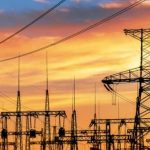The circular debt, higher transmission losses and inefficiency of power firms continued to haunt the power sector in financial year 2018-19, reveals a report released by the National Electric Power Regulatory Authority (Nepra).
The power sector regulator, in its annual Industry Report 2019, called for retiring all inefficient state-run power plants and privatising all power distribution companies.
Nepra observed that centralised governance models for distribution companies failed to bring any noticeable improvement over a period of more than 15 years.
It noted that 12,000 megawatts of electricity was added to the national grid in the last three years but transmission and distribution sectors were completely ignored.
Circular debt
The circular debt continued to plague the sector as it rose to almost Rs1,600 billion due to inefficiencies of generating companies, distribution companies’ inability to achieve targets for transmission and distribution losses and recovery ratios as allowed by Nepra, and other governance issues like delay in tariff notification.
Distribution companies failed to reduce receivables from its customers during the period under review, which swelled Rs248.85 billion. As on June 30, 2019 the overall distribution sector receivables stood at Rs1,145 billion whereas the receivables at the start of current financial year were Rs896.15 billion.
Overall, the distribution companies showed 0.62% improvement in losses over last year. The reduction in losses for all distribution companies combined translated into savings of around Rs6 billion.
The circular debt is a major issue confronting the power sector, which has been aggravated by high transmission and distribution losses for distribution companies.
The failure of distribution companies to show any improvement in their actual level of losses viz-a-viz the authority’s allowed target resulted in an annual loss of around Rs30 billion based on the tariff that remained notified during the period under consideration ie FY 2018-19.
Adding further to the circular debt is the low recovery ratio of distribution companies. While setting the end-consumer tariff for distribution companies, Nepra considered 100% recovery, however, the actual reported recovery by distribution companies remained at around 90.25% for 2018-19, as per distribution companies’ performance statistics published by Pakistan Electric Power Company (Pepco).
The impact of lesser recoveries viz-a-viz the regulatory authority’s target of 100% has resulted in an annual shortfall of around Rs130 billion.Although over the past many years power generation capacity has been added, some key issues like expensive cost of energy supply could not be resolved.
With the exception of a few new power plants, public sector generation companies with drastically inferior efficiencies, which under some cases have deteriorated to about half of their designed values, have not been taken out of the system against the recommendations of the regulator. Domestic gas, which is one of the scarce resources in the country, is being provided to captive power plants, which use it for running smaller-size machines with very low efficiencies. If such gas is diverted to efficient machines, the cost of supply to the grid may be brought down.
Similarly, long-term contracts for re-gasified LNG import have added to constraints on the system operator in operating it optimally.
Installed capacity
Pakistan’s installed power generation capacity as of June 30, 2019 stood at 39,145MW. Of this, 36,061MW is connected with the NTDC system whereas 3,084MW is connected with K-Electric system.
It may be noted that close to 1,700MW of thermal capacity was added to the Pepco system during the period, an increase of 7.3% over last year. About 1,100MW of hydro-based capacity was also added to the system during the same period.
The installed capacity does not fully contribute to energy production due to various factors like auxiliary consumption, impact of site reference conditions and seasonality effects on renewables and large hydroelectric power plants. After accounting for the above factors, the capacity, known as the generation capability, is effectively used for meeting electricity demand.
As reported by NTDC, the number of planned outages at 500-kilovolt and 220kv levels decreased in FY19 as compared to FY18.
The report noted that the installed capacity of K-Electric’s own generation fleet during FY19 was 2,294MW, same as compared to FY18.
K-Electric’s inability to effectively increase its generation capacity has made it dependent on external power sources, including import from the NTDC system.
K-Electric generated 10,727 gigawatt-hours (GWh) of electricity in FY19, up 389GWh over previous year. In addition to its own generation, the utility imported 7,769GWh to meet its increasing demand.
Recommendations
The regulator recommended that the government should consider retiring or replacing public sector generation companies as they were contributing to expensive energy production due to their inferior efficiencies.
It also recommended the federal government to carry out a thorough analysis of any requirement for the import of additional power by K-Electric from the NTDC system.





